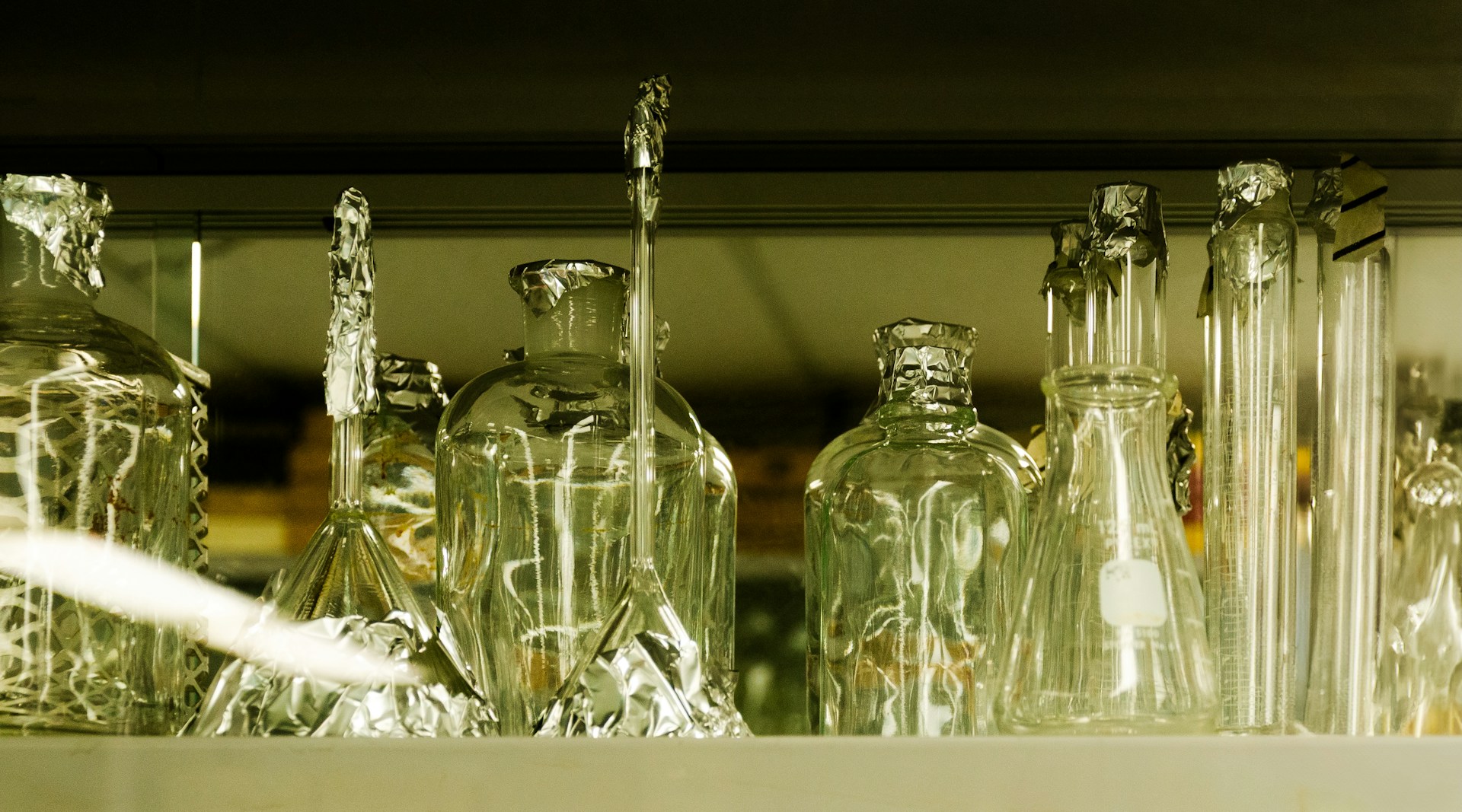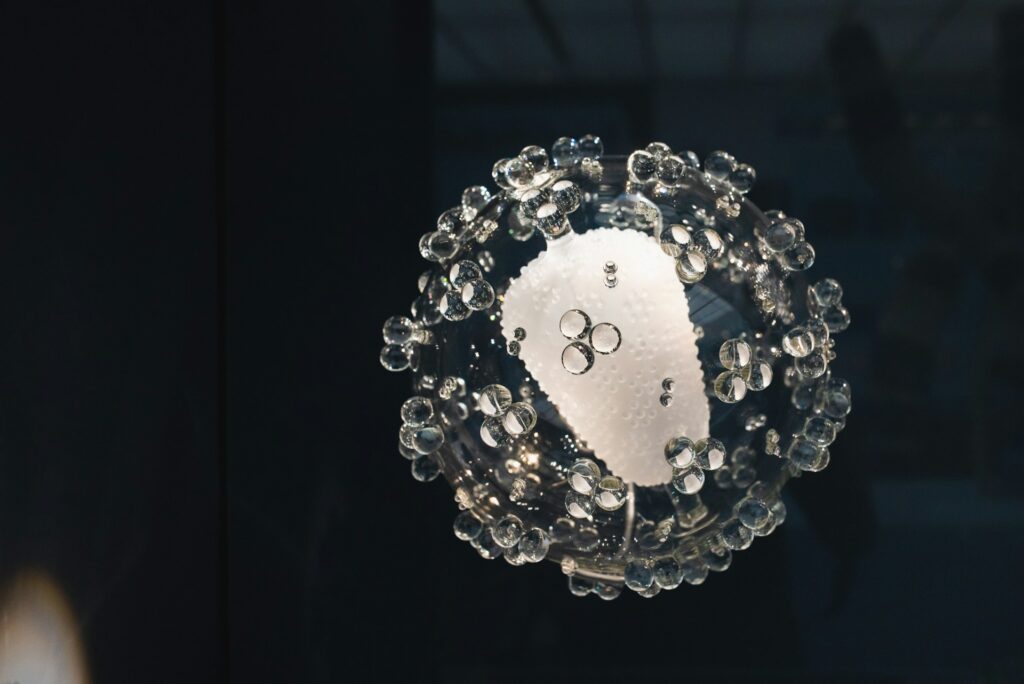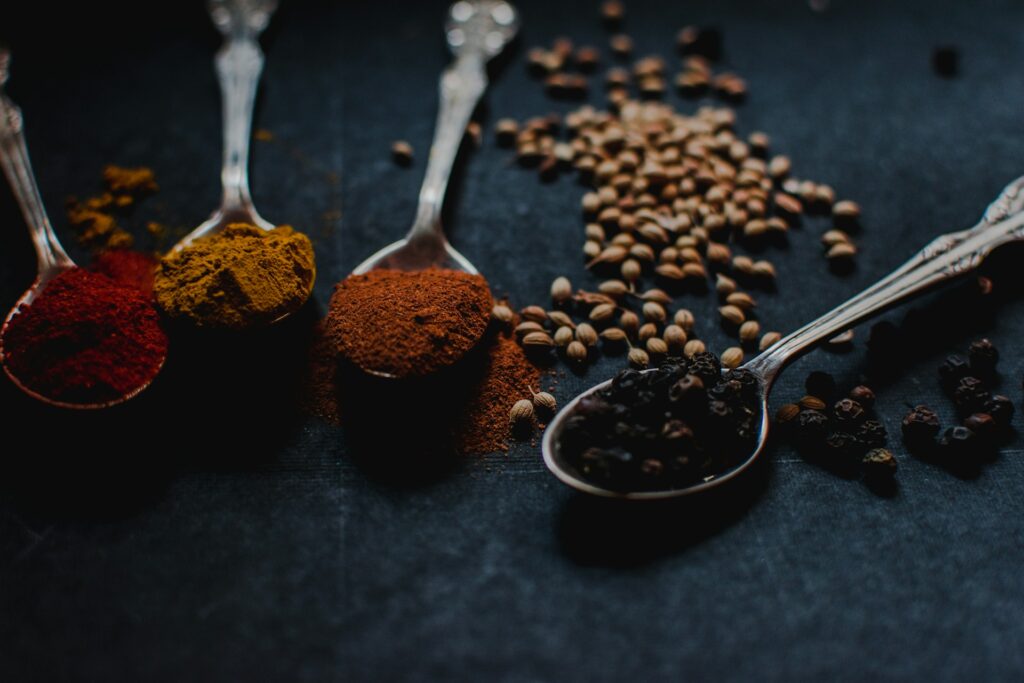A team led by Justin A. North, assistant professor of microbiology at The Ohio State University, has made a significant advance toward producing ethylene biologically rather than relying on fossil fuels. Ethylene is a central component in plastics and other chemical products, and North’s team has focused on an enzyme called methylthio-alkane reductase (MAR), which certain bacteria use to break down organic sulfur compounds and generate ethylene. Their study provides the first detailed insight into the enzyme’s structure and function, revealing unexpected complexity and parallels with the ancient nitrogenase enzymes that fix nitrogen from the air.
Murali, S., Hu, G.-B., Kreitler, D. F., Carriedo, A. A., Lewis, L. C., Fosu, S. A., Weaver, O. G., Buzas, E. M., Byerly, K. M., Yoshikuni, Y., McSweeney, S., Shafaat, H. S., & North, J. A. (2025). Architecture, catalysis and regulation of methylthio-alkane reductase for bacterial sulfur acquisition from volatile organic compounds. Nature Catalysis, 8(10), 1072–1085. https://doi.org/10.1038/s41929-025-01425-3
North’s research group had previously identified the genes responsible for MAR in the bacterium Rhodospirillum rubrum. The genes appeared similar to those of nitrogenases, raising questions about how they catalyze such a specific chemical transformation. To study MAR, the team partnered with Hannah Shafaat, professor of chemistry and biochemistry at UCLA, and researchers from the Department of Energy’s Berkeley Lab Joint Genome Institute and the Laboratory for Biomolecular Structure at Brookhaven National Laboratory.
At the Joint Genome Institute, Yasuo Yoshikuni and colleagues synthesized multiple variants of the MAR genes. North’s lab then expressed these genes in bacterial hosts to produce the MAR protein. Srividya Murali, a research associate and co-lead author, successfully isolated the MAR enzyme in its pure form, a feat that had never been achieved before. This isolation allowed the team to perform detailed structural and functional analyses for the first time.
Using cryogenic electron microscopy, the researchers, including Guobin Hu and Dale Kreitler at Brookhaven National Laboratory, revealed that MAR shares remarkable structural similarities with nitrogenase. Like nitrogenase, MAR contains complex metal cofactors that coordinate iron and sulfur atoms to facilitate electron transfer during the reaction. These cofactors, named mar1 and mar2 clusters, are arranged within the protein to optimize the flow of electrons and the activation of organic sulfur compounds.
While MAR and nitrogenase share these architectural themes, the study found notable differences in the metal environment. MAR’s cofactors are tuned to efficiently extract sulfur from organic compounds and produce ethylene, whereas nitrogenase catalyzes nitrogen fixation. Detailed spectroscopic measurements performed by Shafaat’s group demonstrated that MAR’s electron transfer pathways and metal interactions are highly sophisticated, showing a level of structural and functional complexity previously thought unique to nitrogenases.
The researchers describe MAR as an “older relative” of nitrogenase, reflecting both the evolutionary connection and functional divergence of these enzymes. Understanding how MAR channels electrons through its metal centers to drive specific reactions provides new insight into the versatility of metalloenzymes and opens the door for bioengineering efforts aimed at sustainable chemical production.
Ethylene is traditionally produced through fossil fuel–based methods that require high energy input and release significant carbon dioxide. By contrast, MAR operates under mild, anaerobic conditions and converts volatile organic sulfur compounds into ethylene without producing CO₂ as a byproduct. This makes it an attractive candidate for more environmentally friendly ethylene production.
The study highlights the potential for engineering MAR or similar enzymes to improve yields, substrate range, and stability for industrial applications. North and his collaborators aim to optimize MAR’s catalytic efficiency and integrate it into microbial systems capable of sustainable, large-scale ethylene production. Such approaches could reduce reliance on petroleum-derived feedstocks, lower greenhouse gas emissions, and enable the conversion of sulfur-containing waste or biomass into valuable chemical products.
Although this work represents a major milestone, practical deployment of MAR-based ethylene production faces several challenges. Protein yields in recombinant systems remain limited, and scaling up the process will require careful optimization. Enhancing catalytic efficiency and substrate specificity will also be essential for industrial viability. Researchers plan to use protein engineering and directed evolution to fine-tune MAR’s properties and potentially create even more efficient variants.
In addition to improving industrial applicability, understanding MAR’s structure-function relationship provides a broader framework for exploring metalloenzyme evolution. The enzyme illustrates how nature repurposes ancient catalytic motifs for diverse chemical reactions, revealing possibilities for novel biocatalysts in synthetic biology and green chemistry.
The work led by Justin North, in collaboration with teams from UCLA, the Joint Genome Institute, and Brookhaven National Laboratory, exemplifies how interdisciplinary research can bridge microbiology, structural biology, and sustainable chemistry. By elucidating MAR’s structure and function, the study opens avenues for environmentally friendly ethylene production and highlights the untapped potential of ancient enzymes. This research represents not just a milestone in enzyme characterization, but a promising step toward reducing the environmental footprint of chemical manufacturing.

Adrian graduated with a Masters Degree (1st Class Honours) in Chemical Engineering from Chester University along with Harris. His master’s research aimed to develop a standardadised clean water oxygenation transfer procedure to test bubble diffusers that are currently used in the wastewater industry commercial market. He has also undergone placments in both US and China primarely focused within the R&D department and is an associate member of the Institute of Chemical Engineers (IChemE).



